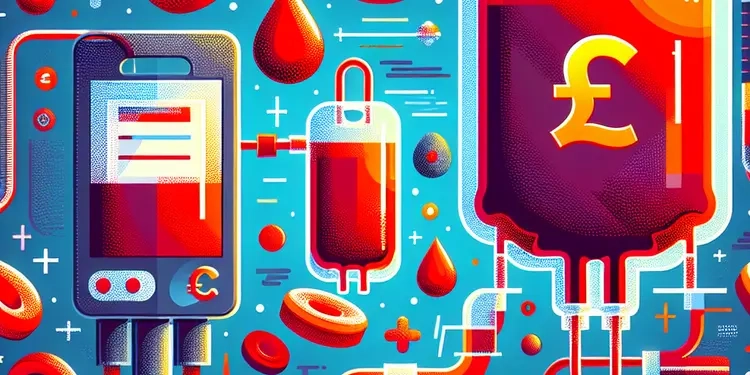
Find Help
More Items From Ergsy search
-
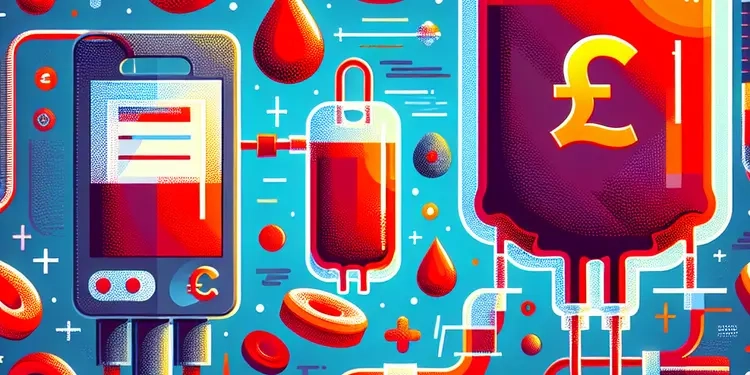
What is a blood transfusion?
Relevance: 100%
-

Blood Product Transfusions
Relevance: 100%
-
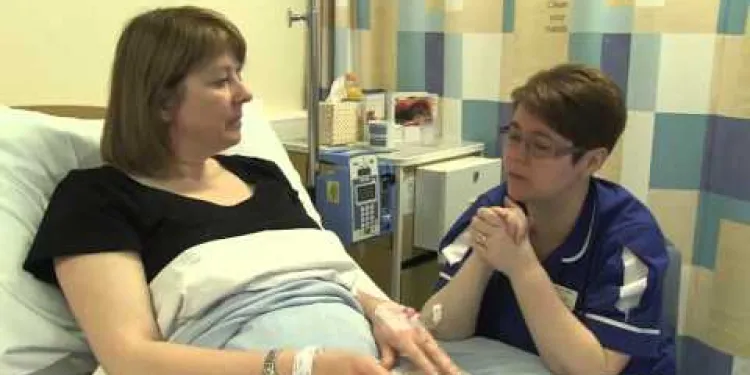
Blood Transfusion
Relevance: 97%
-
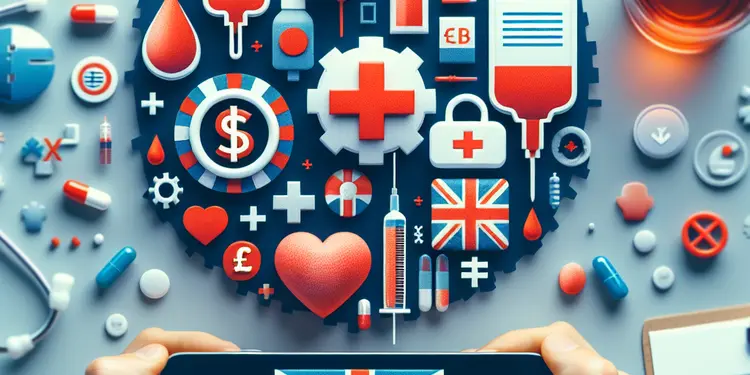
Are there risks associated with blood transfusions?
Relevance: 95%
-
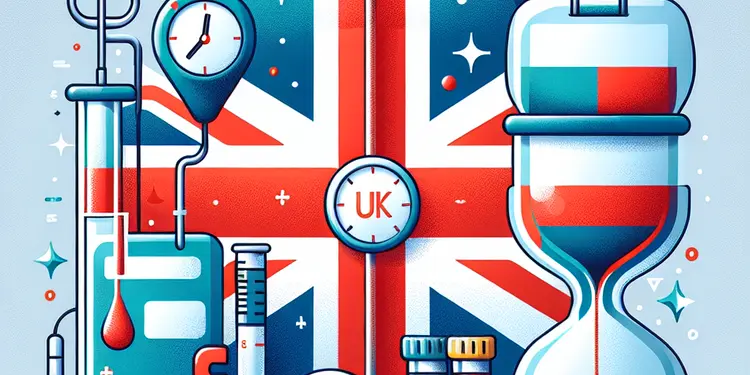
Is there an age limit for receiving blood transfusions?
Relevance: 92%
-
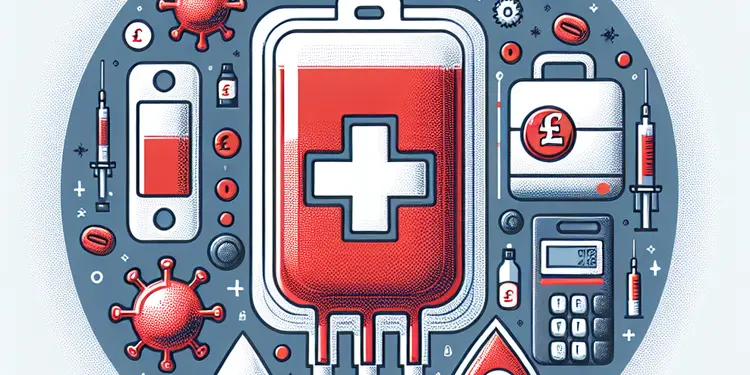
Is HTLV a risk in blood transfusions?
Relevance: 92%
-
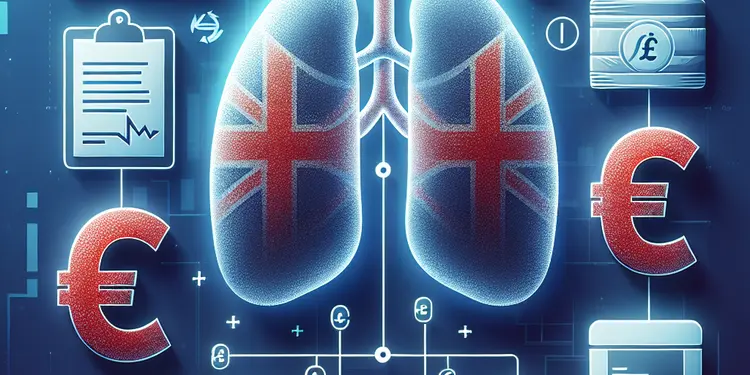
Is Hepatitis B a risk in blood transfusions?
Relevance: 91%
-
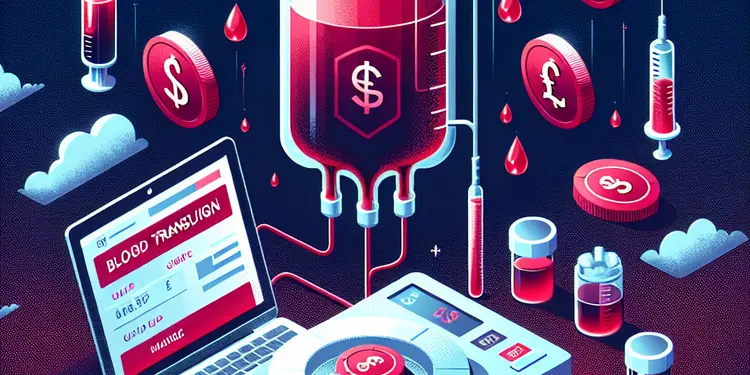
Why might someone need a blood transfusion?
Relevance: 89%
-
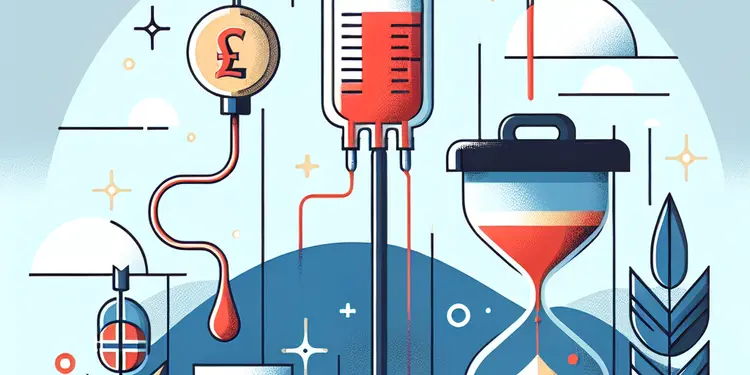
How long does a blood transfusion take?
Relevance: 88%
-

What diseases can be spread by blood transfusions?
Relevance: 88%
-
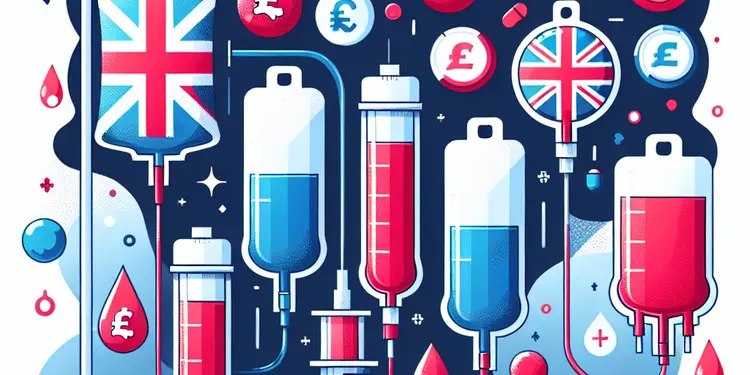
What types of blood products can be transfused?
Relevance: 88%
-
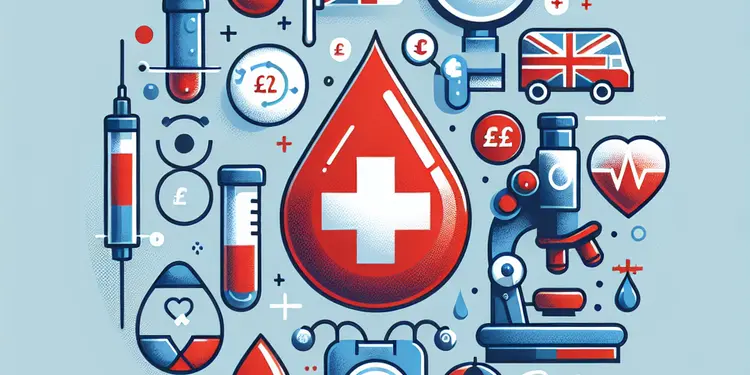
How do healthcare providers match blood for transfusions?
Relevance: 87%
-
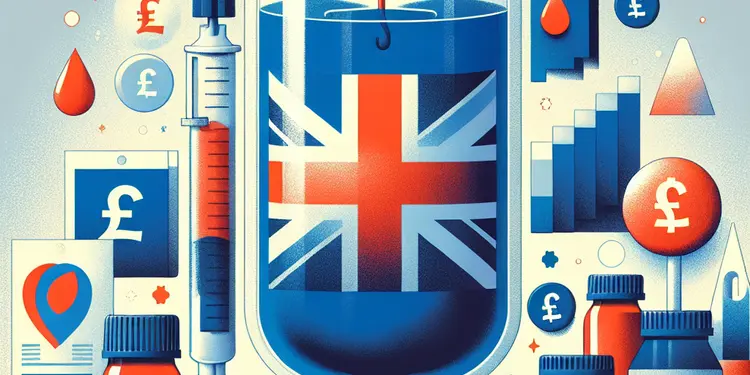
Is Chagas disease a concern with blood transfusions?
Relevance: 87%
-
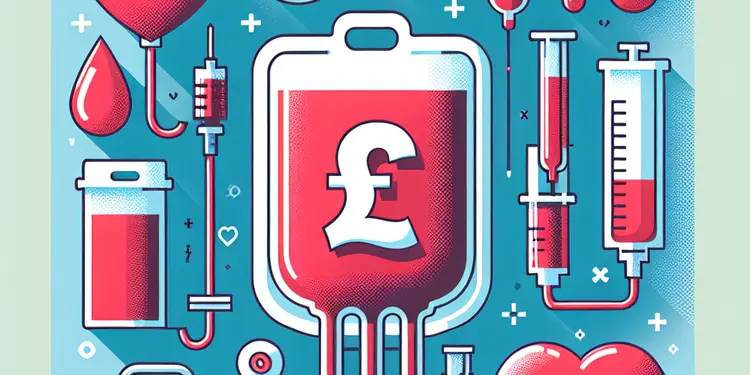
Can HIV be transmitted through blood transfusions?
Relevance: 87%
-
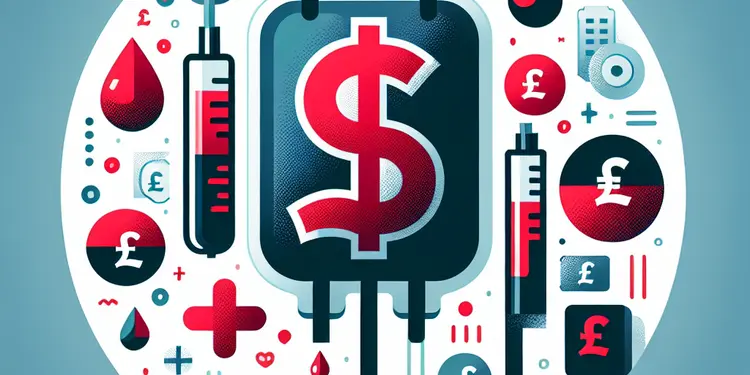
What are some common reasons blood transfusions are needed?
Relevance: 86%
-
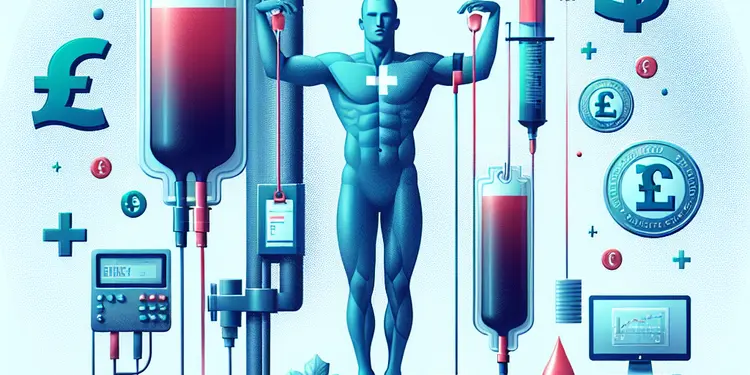
Can someone have a reaction to a mismatched blood transfusion?
Relevance: 86%
-
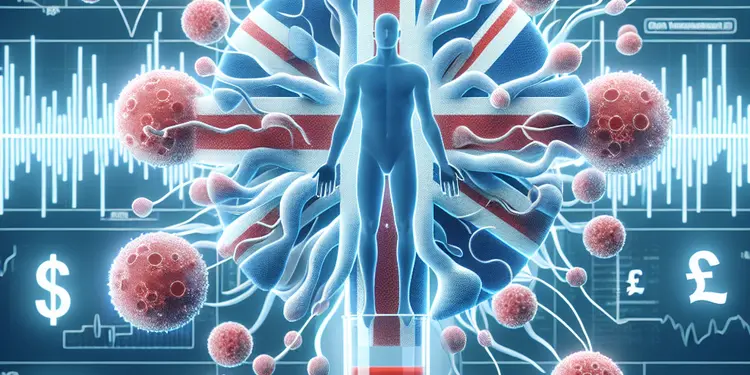
Can syphilis be transmitted via blood transfusion?
Relevance: 86%
-
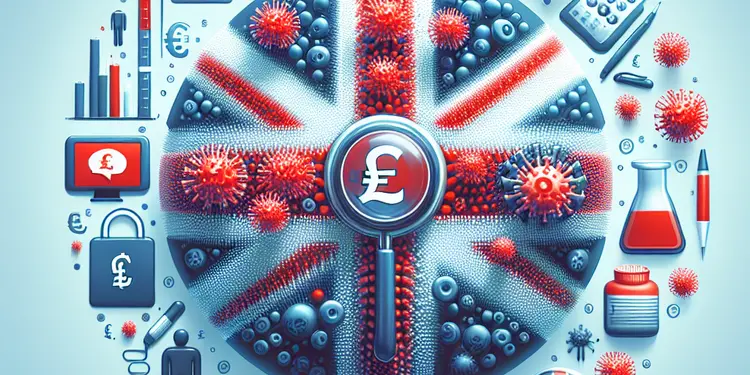
Is Zika virus screened for in blood transfusions?
Relevance: 85%
-
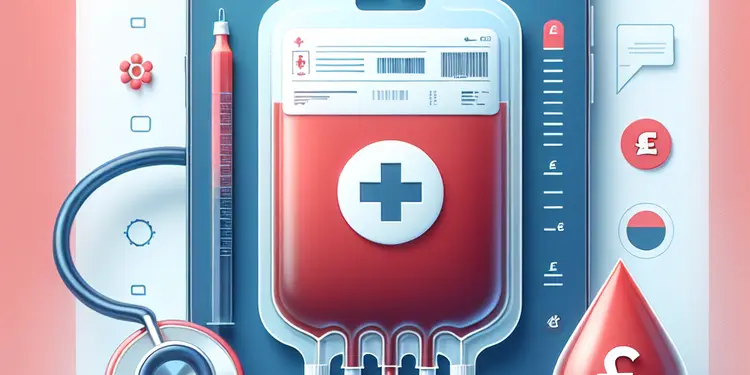
Can bacterial infections be transmitted through blood transfusion?
Relevance: 84%
-
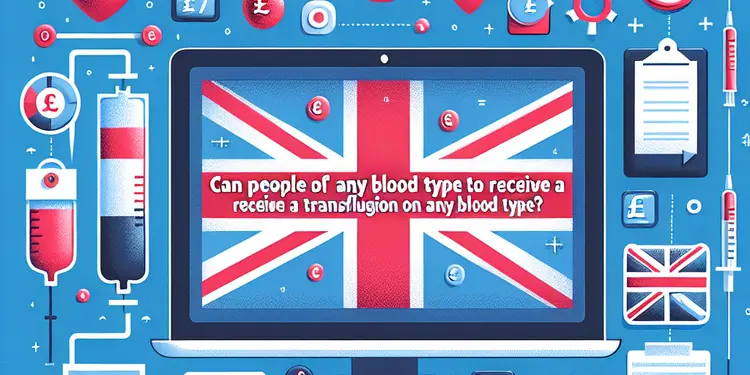
Can people of any blood type receive a transfusion of any blood type?
Relevance: 84%
-
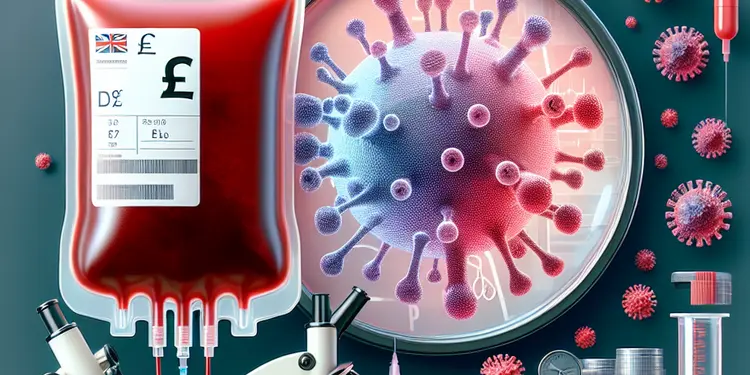
What is the most common disease transmitted by blood transfusion?
Relevance: 84%
-
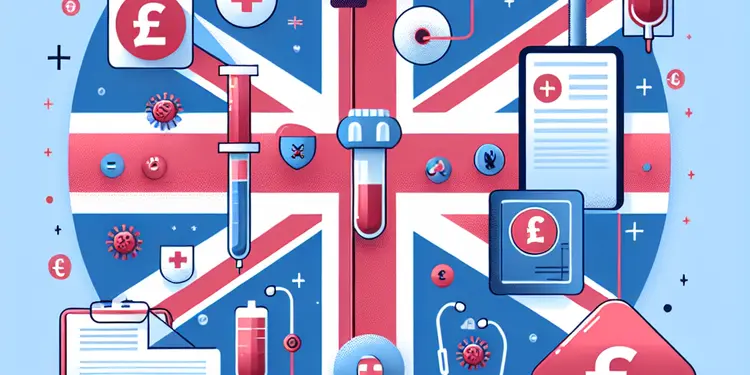
Are there any parasites that can be transmitted through blood transfusions?
Relevance: 84%
-

Is malaria still a concern for blood transfusion safety?
Relevance: 84%
-
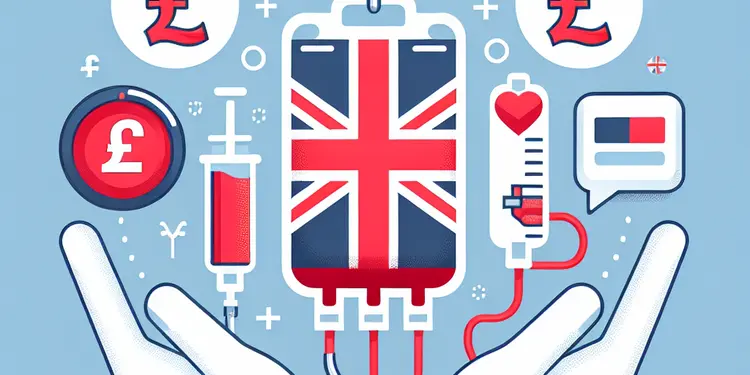
Can COVID-19 be transmitted through blood transfusions?
Relevance: 84%
-
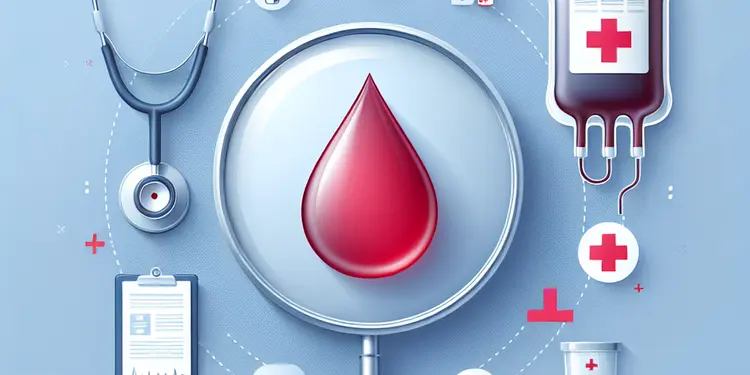
How do doctors determine how much blood is needed for a transfusion?
Relevance: 83%
-
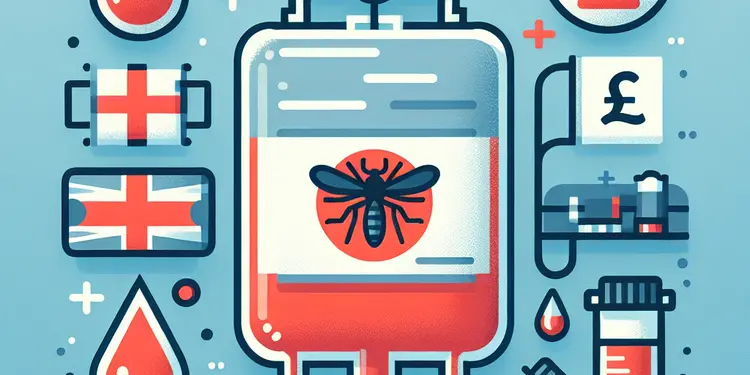
Can Dengue fever be transmitted through blood transfusions?
Relevance: 83%
-
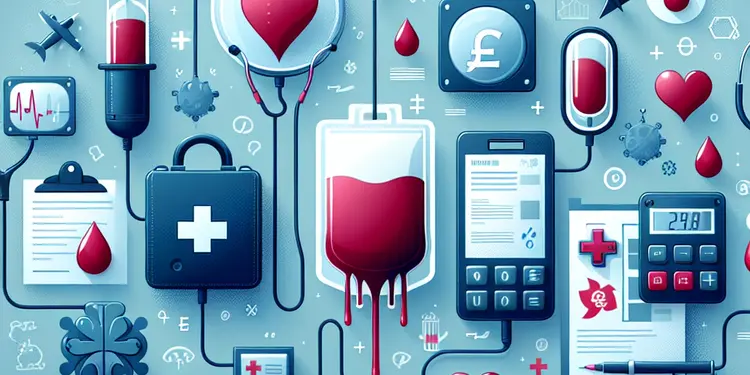
Can certain medical conditions prevent receiving blood transfusions?
Relevance: 83%
-
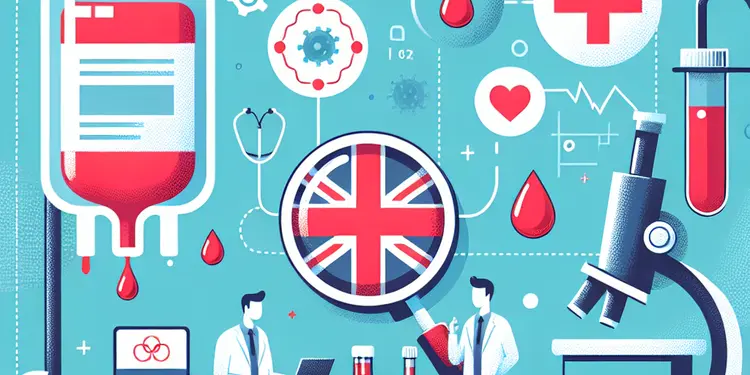
Can you get any prion diseases from blood transfusion?
Relevance: 77%
-
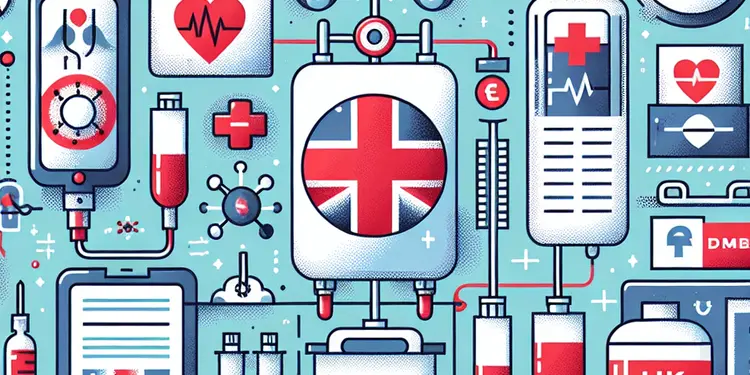
What measures are taken to prevent disease transmission in blood transfusions?
Relevance: 75%
-
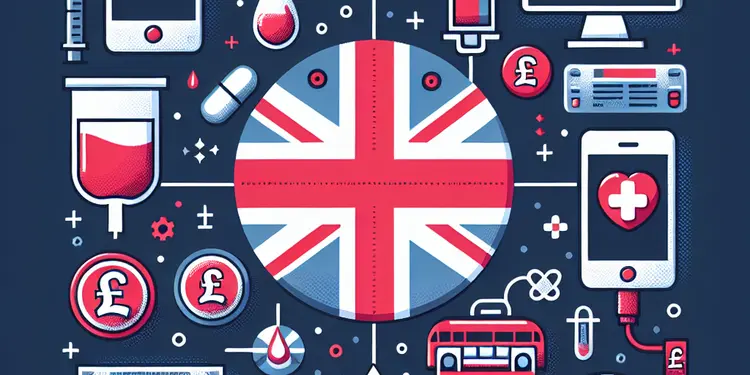
Is blood used for transfusions safe?
Relevance: 70%
-

What is plasma, and why might it be transfused?
Relevance: 69%
-
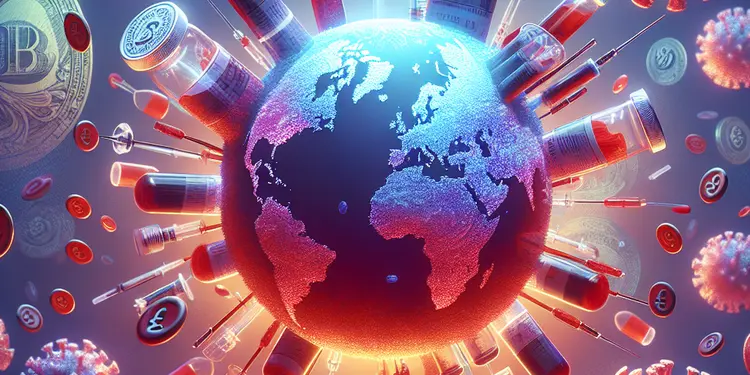
Can cytomegalovirus (CMV) be spread through transfusions?
Relevance: 67%
-

Are there global differences in screening for blood transfusions?
Relevance: 66%
-
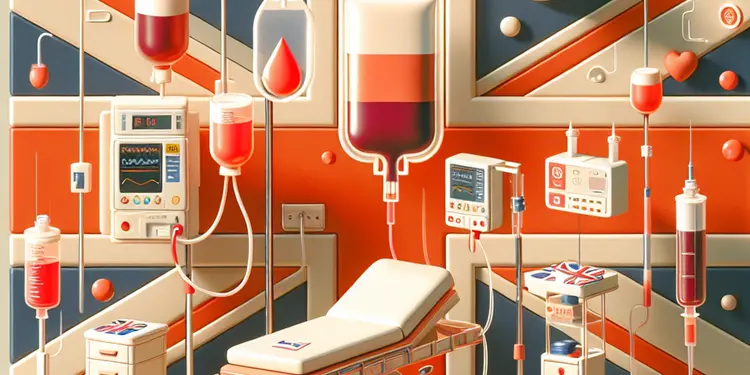
What should a patient expect after a blood transfusion?
Relevance: 60%
-
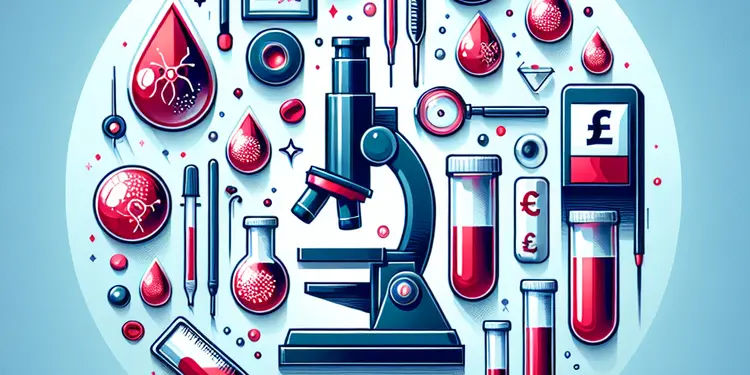
How is blood screened to prevent disease transmission?
Relevance: 60%
-
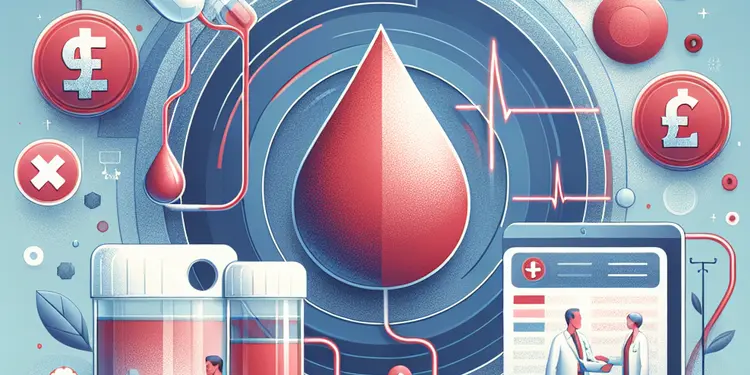
What kind of follow-up care is needed after a blood transfusion?
Relevance: 59%
-
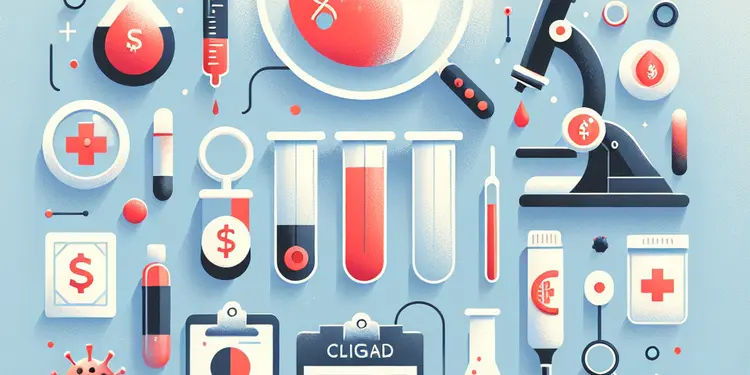
What other viruses are tested for in blood donations?
Relevance: 54%
-
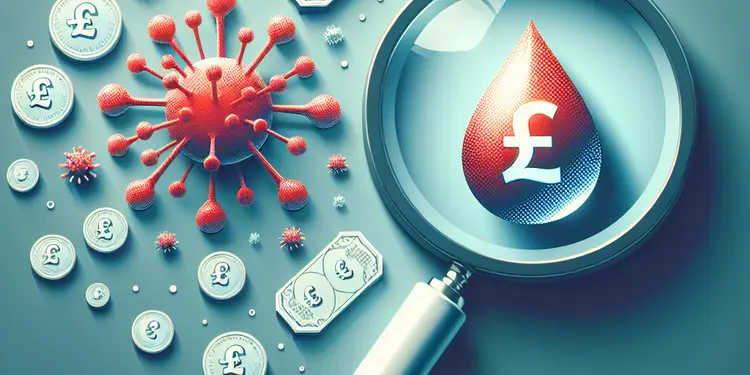
Are new emerging pathogens a risk for blood safety?
Relevance: 54%
-
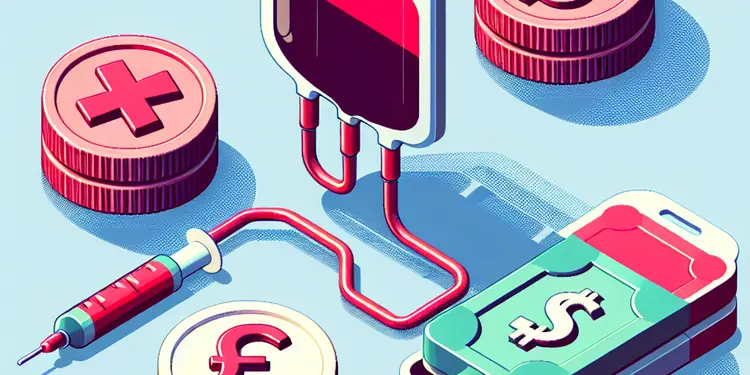
How is a blood transfusion performed?
Relevance: 48%
-
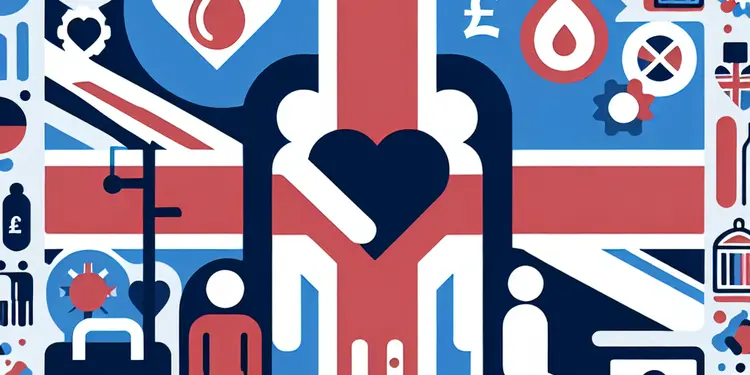
Can you donate blood specifically for a friend or family member?
Relevance: 42%
What is a Blood Transfusion?
A blood transfusion is a medical procedure that involves transferring blood or blood products from one person into the circulatory system of another. This process is crucial for replacing lost components of the blood due to surgery, injury, illness, or disease. Transfusions can involve whole blood or specific components such as red blood cells, plasma, or platelets, depending on the patient's needs.
Why are Blood Transfusions Needed?
Blood transfusions are commonly needed in various medical situations. Patients who have experienced significant blood loss due to surgery or trauma may require a transfusion to restore their blood volume. Individuals with certain medical conditions, such as anaemia or leukaemia, may also need transfusions to replenish depleted blood cells or components. Blood products can help improve oxygen delivery throughout the body, assist with blood clotting, and maintain overall health. In the UK, blood transfusions are essential in ensuring adequate patient care and recovery.
The Blood Transfusion Process
The blood transfusion process begins with a healthcare provider determining the patient's need for a transfusion and confirming their blood type. Blood typing is crucial as it ensures compatibility between donor and recipient, reducing the risk of adverse reactions. The blood or blood product is then carefully matched to the patient’s type and Rh factor to ensure compatibility.
During the transfusion, a needle is inserted into a vein, usually in the arm, and the blood product is delivered through an intravenous (IV) line. The process can take from 30 minutes to several hours, depending on the volume and type of blood product being administered. Throughout the procedure, healthcare professionals closely monitor the patient for any signs of reactions or complications.
Safety and Regulations in the UK
In the UK, blood transfusions are meticulously regulated to ensure safety for both donors and recipients. Blood is collected from volunteer donors through the National Health Service (NHS) Blood and Transplant, which follows strict guidelines for donor selection, blood collection, processing, and testing. Each donation is screened for infectious diseases and tested for blood group compatibility.
Adverse reactions are rare, thanks to rigorous screening and monitoring processes. However, patients are informed of the risks and benefits before the procedure, and consent is obtained. Healthcare professionals are trained to manage any potential reactions promptly and effectively.
Conclusion
Blood transfusions are a vital component of modern medicine, enabling the treatment of numerous conditions and supporting patients through critical periods of care. In the UK, the system is designed to be safe, efficient, and patient-focused, ensuring that individuals in need of transfusions receive the best possible care and outcomes. Through volunteer donation and strict protocols, blood transfusions continue to save lives and improve health across the nation.
What is a Blood Transfusion?
A blood transfusion is when blood from one person is given to another person. This is done to help people who lost blood in surgery, have an injury, are sick, or have a disease. Sometimes, people get only the parts of the blood they need, like red blood cells, plasma, or platelets.
Why are Blood Transfusions Needed?
People need blood transfusions for many reasons. If someone loses a lot of blood in surgery or an accident, they may need more blood. Some people have illnesses like anaemia or leukaemia and need new blood cells. Blood transfusions help with giving oxygen, clotting blood, and keeping people healthy. In the UK, blood transfusions are important for helping patients get better.
The Blood Transfusion Process
A doctor will decide if a person needs a blood transfusion. They check the blood type to make sure the blood is a good match. This makes the transfusion safer. A needle puts the blood into the person's vein, usually in their arm. The transfusion can take 30 minutes to a few hours, depending on how much blood is needed. Nurses and doctors watch to make sure everything goes well.
Safety and Regulations in the UK
Blood transfusions in the UK follow strict rules to keep everyone safe. Blood comes from volunteers and is carefully tested. The NHS Blood and Transplant makes sure everything is done safely. They check for diseases and blood types. Problems with transfusions are rare because of these careful checks. Before getting a transfusion, patients learn about risks and give their agreement. Nurses and doctors know how to handle any issues if they happen.
Conclusion
Blood transfusions are very important in medicine today. They help treat many health problems and support patients when they need it most. In the UK, the system is made to be safe and helpful for patients. Blood donations from volunteers and strict safety rules help save lives and make people healthier.
Frequently Asked Questions
What is a blood transfusion?
A blood transfusion is a medical procedure in which donated blood or blood products are transferred into a person's bloodstream.
Why might someone need a blood transfusion?
Blood transfusions are commonly needed for people who have lost blood due to surgery, injury, or illness, or for those who have conditions like anemia, cancer, or liver disorders.
What types of blood products can be transfused?
The types of blood products that can be transfused include whole blood, red blood cells, platelets, plasma, and cryoprecipitate.
How is a blood transfusion performed?
A blood transfusion is typically performed by inserting an intravenous (IV) line into a vein, through which the blood or blood product is given.
How long does a blood transfusion take?
The time it takes can vary, but generally, a blood transfusion can take anywhere from 1 to 4 hours depending on the amount and type of blood product transfused.
Is blood used for transfusions safe?
Yes, donated blood is carefully screened for infectious diseases, and the blood supply is considered very safe.
Are there risks associated with blood transfusions?
Like any medical procedure, blood transfusions have some risks, including allergic reactions, fever, iron overload, or infections, but these are rare due to stringent safety practices.
Can people of any blood type receive a transfusion of any blood type?
No, blood types must be compatible. There are specific matching rules for ABO and Rh blood types to ensure compatibility and prevent adverse reactions.
What are some common reasons blood transfusions are needed?
Common reasons include severe anemia, surgical blood loss, trauma or injury, certain medical conditions like sickle cell disease, or treatments like chemotherapy that affect blood counts.
How do doctors determine how much blood is needed for a transfusion?
Doctors determine the amount based on the patient's medical condition, blood volume requirements, and lab tests like hemoglobin levels.
Can you donate blood specifically for a friend or family member?
Yes, this is called directed donation, but it's not always available everywhere due to logistical and safety considerations.
Is there a universal blood donor type?
Yes, people with O negative blood type are considered universal donors for red blood cells because their blood can be given to people of any blood type.
What is plasma, and why might it be transfused?
Plasma, the liquid part of blood, carries essential proteins and nutrients. It's often transfused to help with clotting problems or to replace lost blood volume.
What should a patient expect after a blood transfusion?
After a transfusion, patients are monitored for any adverse reactions, but most can return to normal activities once cleared by medical staff.
How do healthcare providers match blood for transfusions?
Blood is matched primarily based on ABO and Rh blood type. Crossmatching tests are also done to check for specific compatibility.
Can someone have a reaction to a mismatched blood transfusion?
Yes, receiving incompatible blood can trigger a dangerous immune response, which is why careful crossmatching is crucial.
Is there an age limit for receiving blood transfusions?
No specific age limit; transfusions are based on medical need, regardless of age, though special considerations may apply for newborns and the elderly.
What kind of follow-up care is needed after a blood transfusion?
Patients typically have blood tests to monitor recovery and check for any delayed reactions, and they should report any unusual symptoms to their doctor.
Can certain medical conditions prevent receiving blood transfusions?
Certain conditions, such as religious beliefs rejecting transfusions, may lead to alternatives being sought, but medically, few conditions prevent transfusion.
What alternatives exist if a blood transfusion is not an option?
Alternatives can include volume expanders, medications to boost blood production, synthetic oxygen carriers, or autologous blood transfusion, where patients donate their own blood ahead of procedures.
What is a blood transfusion?
A blood transfusion is when you get new blood. This new blood comes from another person. It helps if you are sick or hurt. The new blood goes into your body through a small tube in your arm.
If you want to learn more about blood transfusions, you can:
- Ask your doctor or nurse to explain it.
- Look at pictures or videos that show how it works.
- Use apps or tools that read out loud to you.
A blood transfusion is when a person gets blood from someone else. This blood goes into their body to help them.
Why might someone need new blood?
Sometimes, people need more blood. This could be because they lost lots of blood or their blood is not working right. A doctor gives them new blood to help them feel better.
If you find reading hard, you might use pictures to help understand. You can also ask someone to explain things or read with you.
People sometimes need new blood if they have lost a lot of their own blood. This can happen because of an operation, an accident, or when they are sick. They might also need new blood if they have problems like anemia, cancer, or issues with their liver.
What kinds of blood can doctors give you?
The kinds of blood that can be given to someone else are: whole blood, red blood cells, platelets, plasma, and something called cryoprecipitate.
How do you get a blood transfusion?
A blood transfusion is when you get new blood. A doctor or nurse gives you blood through a small tube in your arm. It can help if you are sick or need more blood.
You can make it easier to understand with these tips:
- Ask a helper or family member to explain.
- Use pictures or videos to see how it works.
- Ask the doctor or nurse to use simple words.
A blood transfusion is when someone gets blood through a small tube. The tube goes into a vein in their arm. This is called an IV line. The blood goes into the person's body through this tube.
How long does it take to get new blood?
A blood transfusion is when you get new blood. It usually takes 1 to 4 hours. A nurse will watch you to make sure you are OK. You can bring a book, toy, or watch a movie to pass the time.
Getting a blood transfusion can take some time. It usually takes between 1 and 4 hours. This depends on how much blood is needed and the type of blood being used.
Is the blood for transfusions safe?
Yes, the blood is safe. Doctors and nurses check it carefully. They make sure it is clean and healthy.
If you want help reading, you can ask someone, use audiobooks, or special reading apps.
Yes, donated blood is checked to make sure it is safe. They look for any sickness in the blood. The blood is safe to use.
Can getting blood from someone else be risky?
When people get blood from someone else, it is called a blood transfusion. This can sometimes cause problems, like an allergic reaction or a fever. Too much iron in the blood can also be a problem. There is also a very small chance of getting an infection. But doctors and nurses work very hard to keep this safe, so these problems do not happen often.
Can everyone get any kind of blood?
People have different types of blood. They need to get the right type when they have a blood transfusion.
Supportive tools:
- Ask your doctor which blood type you have.
- Use a chart to learn about blood types.
- Ask questions if you are unsure.
No, blood types need to match. There are special rules for matching ABO and Rh blood types. This is important to make sure there are no bad reactions.
Here are some tips to help you understand:
- Use a simple chart or picture to show how blood types match.
- Ask someone to explain it to you in a different way if it's still unclear.
Why do people need blood transfusions?
Here are some common reasons:
- Loss of blood: People might lose a lot of blood from an accident or during surgery.
- Illness: Some illnesses cause the body to not have enough healthy blood, like when people are very sick.
- Help the body heal: Sometimes people need extra blood to help their body get better.
Supportive tools or techniques:
- Ask a doctor or nurse to explain in simple words.
- Use pictures or videos to understand better.
- Have a friend or family member help explain.
People might need more blood because:
- They have very low iron, called anemia.
- They lost a lot of blood during an operation.
- They got hurt in an accident.
- They have health problems like sickle cell disease.
- They are getting medicine, like chemotherapy, that changes their blood.
How do doctors know how much blood a person needs?
Doctors check how much blood a person has lost. They also see how sick the person is. They may do a blood test. This helps them decide how much blood is needed.
Doctors use special tools and tests to help. They make sure the person gets the right amount of blood.
Doctors decide how much blood you need. They look at why you need it, how much blood you have, and test your blood with things like hemoglobin tests.
Can you give blood just for a friend or family member?
Yes, you can give blood for someone special to you.
Here are some tips to help:
- Talk to the hospital or blood bank. They can tell you how it works.
- Make sure you are healthy. You need to feel well to give blood.
- Ask someone to go with you. They can help and support you.
Yes, this is called directed donation. But you can't always do it everywhere because of safety and other reasons.
Can anyone give blood to everyone?
Some people have a special blood type that can be given to anyone. This means their blood can help a lot of people. Would you like to know more about this blood type?
Yes, people with O negative blood can give their red blood cells to anyone. This means they are known as universal donors.
What is plasma, and why might it be transfused?
What is plasma?
Plasma is a part of your blood. It is a yellow liquid. It carries things like blood cells, nutrients, and hormones in your body.
Why do people get plasma transfusions?
Sometimes people need more plasma. This can happen if they lose a lot of blood or are very sick. Doctors give them plasma to help them get better.
Helpful tips:
- Ask a doctor or nurse to explain things to you.
- Use simple words to talk about plasma.
- Look at pictures of blood to see where plasma is.
Plasma is the liquid part of your blood. It carries important proteins and nutrients that your body needs. Doctors give plasma to people to help with clotting problems or when they have lost a lot of blood.
What happens after you get new blood?
After getting new blood, you might feel better, like having more energy.
If you can, rest and drink plenty of water.
If you feel dizzy or sick, tell a doctor or nurse.
Ask someone to stay with you, like a family member or friend.
After getting new blood in a transfusion, doctors and nurses check to make sure you feel okay. If they say you are fine, you can go back to doing your usual things.
How do doctors find the right blood for transfusions?
Doctors give blood to people who need it. This is called a blood transfusion. But, they have to make sure it matches! Here is how they do it:
- People have different types of blood. Types are like groups: A, B, AB, and O.
- Doctors check what type of blood a person has. They look at a small sample of blood.
- They also check for something called Rh factor. This can be positive (+) or negative (-).
- The doctors find blood that matches the person's type and Rh. This helps keep them safe.
Tools that help:
- Online videos: Watch simple videos on how blood matching works.
- Flashcards: Use cards with blood types to remember them.
- Ask a helper: A friend or teacher can explain it with pictures.
Blood is grouped by type. There are two main groups: ABO and Rh. Doctors do tests to make sure blood types match. These tests are called crossmatching. They help find blood that is safe to use.
Use pictures or videos to help understand blood types.
Ask someone you trust if you have questions.
Can someone get sick from the wrong blood transfusion?
Yes, if a person gets blood that does not match their own, they can get sick. This is called a reaction. It's important to get the right type of blood.
Helpful tip: If you need help understanding, ask a nurse or doctor to explain. They can show pictures or use simple words to help you.
Yes, getting the wrong blood can make you very sick because your body will try to fight it. This is why doctors need to match your blood very carefully.
Can people of any age get a blood transfusion?
Everyone, young or old, can get a blood transfusion if they need it. A doctor will decide if it is the right thing to do.
If you want help reading or understanding this, you can:
- Ask someone to read it with you.
- Use a dictionary to look up words you don't know.
- Watch videos about blood transfusions online.
There is no specific age limit for blood transfusions. Doctors give blood transfusions if someone needs it, no matter how old they are. But, doctors are extra careful with newborn babies and older people.
What care do you need after getting new blood?
Patients often have blood tests to see how well they are getting better and to check for any late problems. They should tell their doctor if they feel anything different or strange.
Can some health problems stop you from getting blood?
Sometimes, people might not want a blood transfusion because of their religious beliefs. In these cases, doctors try to find other ways to help them. But, there are not many medical reasons why someone can't have a blood transfusion.
What can you do if you can't have a blood transfusion?
Sometimes a doctor might say you can't have a blood transfusion. If this happens, there are other things that can help.
Doctors can give you medicine to help your body make more blood. Eating foods with iron, like spinach and beans, can also help you get strong blood.
If you need more help, doctors have special tools to save your blood during surgery. They can also give you liquids that help your blood work better.
If you are unsure, ask your doctor to explain other options. You can also ask someone you trust to help you understand.
Always talk to your doctor or nurse. They will help you find what's best for you.
There are different ways to help with blood. Here are some:
- Volume expanders: These make the blood bigger.
- Medicines: Some medicines help your body make more blood.
- Fake oxygen carriers: These help carry oxygen in the blood.
- Giving your own blood: You can give your blood before a surgery and get it back during it.
Here are some tools and tips to help you understand better:
- Ask a doctor or nurse to explain things.
- Use pictures or drawings to make it clearer.
- Bring a friend or family member to listen and help understand.
Useful Links
- Ergsy carfully checks the information in the videos we provide here.
- Videos shown by Youtube after a video has completed, have NOT been reviewed by ERGSY.
- To view, click the arrow in centre of video.
- Most of the videos you find here will have subtitles and/or closed captions available.
- You may need to turn these on, and choose your preferred language.
- Go to the video you'd like to watch.
- If closed captions (CC) are available, settings will be visible on the bottom right of the video player.
- To turn on Captions, click settings .
- To turn off Captions, click settings again.
More Items From Ergsy search
-

What is a blood transfusion?
Relevance: 100%
-

Blood Product Transfusions
Relevance: 100%
-

Blood Transfusion
Relevance: 97%
-

Are there risks associated with blood transfusions?
Relevance: 95%
-

Is there an age limit for receiving blood transfusions?
Relevance: 92%
-

Is HTLV a risk in blood transfusions?
Relevance: 92%
-

Is Hepatitis B a risk in blood transfusions?
Relevance: 91%
-

Why might someone need a blood transfusion?
Relevance: 89%
-

How long does a blood transfusion take?
Relevance: 88%
-

What diseases can be spread by blood transfusions?
Relevance: 88%
-

What types of blood products can be transfused?
Relevance: 88%
-

How do healthcare providers match blood for transfusions?
Relevance: 87%
-

Is Chagas disease a concern with blood transfusions?
Relevance: 87%
-

Can HIV be transmitted through blood transfusions?
Relevance: 87%
-

What are some common reasons blood transfusions are needed?
Relevance: 86%
-

Can someone have a reaction to a mismatched blood transfusion?
Relevance: 86%
-

Can syphilis be transmitted via blood transfusion?
Relevance: 86%
-

Is Zika virus screened for in blood transfusions?
Relevance: 85%
-

Can bacterial infections be transmitted through blood transfusion?
Relevance: 84%
-

Can people of any blood type receive a transfusion of any blood type?
Relevance: 84%
-

What is the most common disease transmitted by blood transfusion?
Relevance: 84%
-

Are there any parasites that can be transmitted through blood transfusions?
Relevance: 84%
-

Is malaria still a concern for blood transfusion safety?
Relevance: 84%
-

Can COVID-19 be transmitted through blood transfusions?
Relevance: 84%
-

How do doctors determine how much blood is needed for a transfusion?
Relevance: 83%
-

Can Dengue fever be transmitted through blood transfusions?
Relevance: 83%
-

Can certain medical conditions prevent receiving blood transfusions?
Relevance: 83%
-

Can you get any prion diseases from blood transfusion?
Relevance: 77%
-

What measures are taken to prevent disease transmission in blood transfusions?
Relevance: 75%
-

Is blood used for transfusions safe?
Relevance: 70%
-

What is plasma, and why might it be transfused?
Relevance: 69%
-

Can cytomegalovirus (CMV) be spread through transfusions?
Relevance: 67%
-

Are there global differences in screening for blood transfusions?
Relevance: 66%
-

What should a patient expect after a blood transfusion?
Relevance: 60%
-

How is blood screened to prevent disease transmission?
Relevance: 60%
-

What kind of follow-up care is needed after a blood transfusion?
Relevance: 59%
-

What other viruses are tested for in blood donations?
Relevance: 54%
-

Are new emerging pathogens a risk for blood safety?
Relevance: 54%
-

How is a blood transfusion performed?
Relevance: 48%
-

Can you donate blood specifically for a friend or family member?
Relevance: 42%


